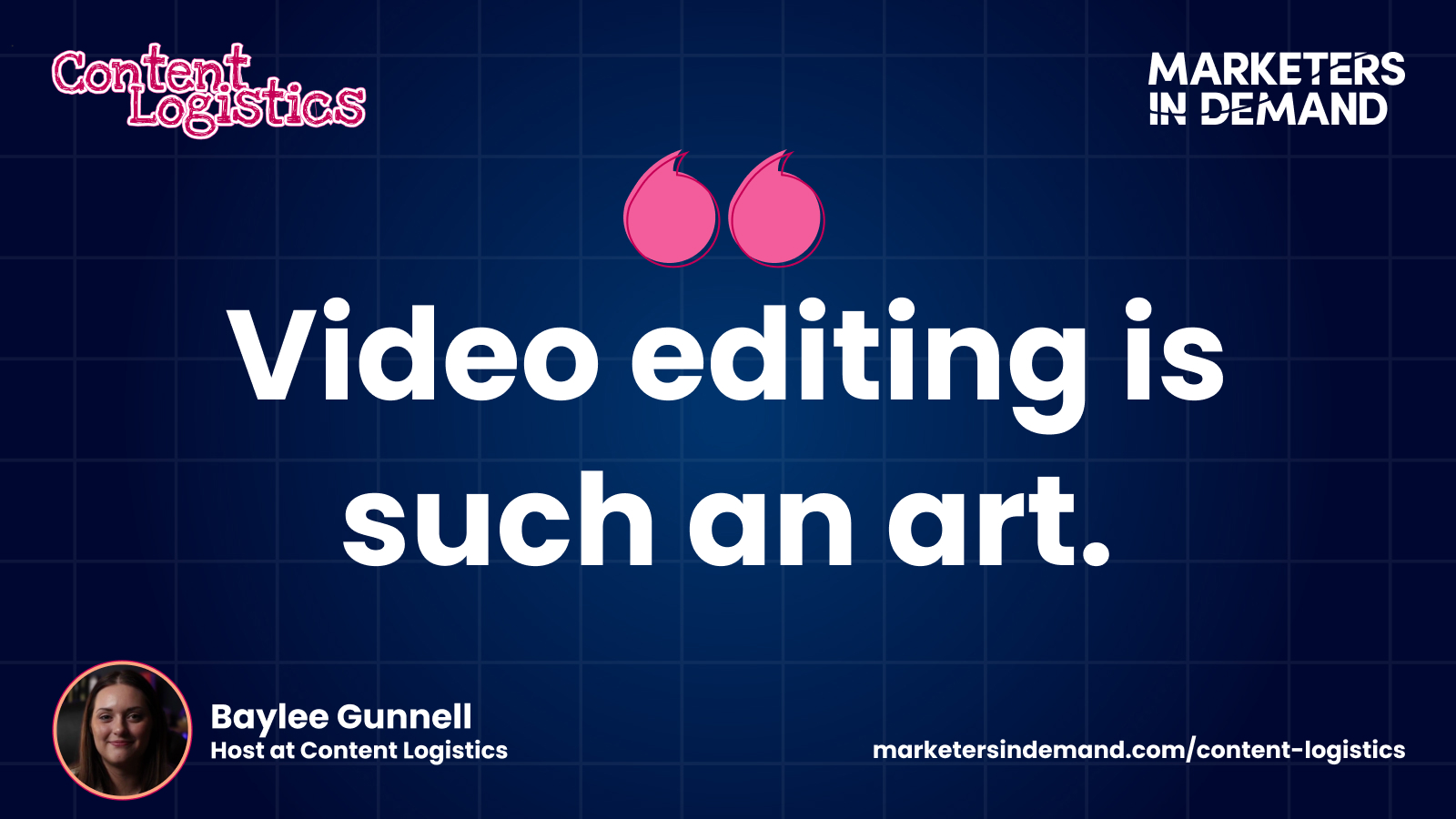Most B2B companies either don’t create video content or struggle to generate meaningful traffic from it. According to Wyzowl’s 2025 State of Video Marketing Survey, 37% of marketers don’t include video as a marketing strategy because they don’t know how or where to start.
At New North, we believe that effective B2B video marketing isn’t about going viral — it’s about creating thoughtful content that resonates with your target audience and drives measurable business results. It comes down to an intentional video marketing strategy, not higher production budgets.
In this guide, I’ll outline the five key elements of good videos. Learn how you can transform views-focused content into sales-driving assets based on proven B2B video marketing approaches for small tech marketing teams.
The Fame vs. Fortune Mindset
When developing your B2B video marketing strategy, you should choose your goal carefully.
“For every client we take on, we ask the same question: Do you want fame or do you want fortune? And all of them pick the latter,” Lyndsay Cambridge, Director of Jammy Digital, shared during our conversation. She explains that if you are looking to go viral, you need to target a broad audience. However, if you’re focusing on revenue, you need to narrow in on a specific niche and convert that audience into sales.
This distinction has real consequences for your B2B video marketing efforts. For example, you could be selling online accounting courses and decide to take a video strategy of fame. You create content around your lifestyle and gain a lot of subscribers and followers. However, you notice your courses aren’t selling as you expected because audiences were only interested in your lifestyle, not your product.
Focusing on a niche audience may result in fewer views, but those views are more likely to lead to meaningful engagement and, ultimately, higher sales. This is why we need to reframe how we think about B2B video marketing success — moving away from vanity metrics to sales-focused outcomes.

Five Essential Elements of Videos that Drive Sales
1. Consistency
Consistency involves posting regularly according to a realistic publishing schedule. Lyndsay explained that she always asks her clients how often they can post, considering their resources. For B2B tech companies with limited resources, this might mean one 10-minute video weekly, complemented by three shorter pieces of video content.
Consistency is important because, over time, it builds audience loyalty — a critical foundation for B2B video marketing that drives sales.
2. Compelling Hooks
The most effective hooks for B2B video content demonstrate proof of expertise and results upfront.
Rather than using a generic title like “How to Get 1 Million Views on YouTube,” Lyndsay suggests highlighting a case study or testimonial, such as “I Got Our Client 1 Million Views on YouTube in Less Than Six Months — Here’s How.” This helps you establish immediate credibility by showcasing a concrete achievement before outlining the steps taken to reach it. For B2B companies, this means leading with specific results they have delivered, such as reduced implementation time, better security, or actual ROI figures, rather than making broad, generic promises across content or social media platforms.
3. Unique Storytelling
In an era of AI-generated content, original insights based on real experience have become incredibly valuable for B2B video marketing. You need to make sure that every piece of video content is unique and original.
Original video content means using stories, experiences, and client successes that only you possess. It’s entirely unique content — something that can’t be found anywhere else online. AI can’t replicate it because it lacks your personal insights, experiences, and way of thinking.
4. Professional Direction
Creating effective B2B video marketing content doesn’t require a Hollywood production team, but having someone you can look at and talk to rather than just sitting alone with a camera can make a huge difference. It makes the recording more natural, especially for company leaders who may not be comfortable on camera.
Having someone in your team who can kindly catch you when you make mistakes or need to clarify points makes a significant difference in quality and makes the process easier for non-professional presenters in your B2B video marketing efforts.
5. Editing
The final element that enhances B2B video marketing content is compelling, high-quality editing. Powerful editing keeps videos engaging — it removes pauses, filler language, or distractions to create a polished and impactful final product. It can also fix mistakes, enhance pacing, and make content significantly more interesting to watch.
Beyond refinement, maintaining a consistent visual identity is essential. Using the same fonts, colors, emojis, and graphic styles across all videos will help to create a cohesive brand presence.
For those working with limited resources, Lyndsay advises prioritizing editing over everything else in the video production process. Even with a small budget, strong editing can elevate raw footage into professional, high-quality content that aligns with brand standards and keeps audiences engaged.

Conclusion
Effective B2B video marketing drives sales through thoughtful video content that resonates with your target audience. By focusing on the five key elements we’ve discussed, you can transform your B2B video marketing from a high-view, low-conversion effort into a sales-generating asset.
Remember that this approach is absolutely achievable even for small, resource-constrained tech marketing teams. Start with a realistic, consistent video marketing strategy. Focus on sharing your unique expertise. Prioritize editing and measure success through sales, not just views.
By creating video content specifically designed for your niche target audience, you’ll see the impact where it matters most — on your bottom line.
Frequently Asked Questions
What types of videos work best for B2B marketing?
Case studies, product demonstrations, expert interviews, and educational/how-to videos typically perform best in B2B video marketing. These formats allow you to showcase your expertise, demonstrate product value, and address specific pain points while building trust with your target audience.
How long should B2B marketing videos be?
The ideal length depends on the purpose of your content and the platform. For social media platforms, keep videos under 2 minutes. Educational content can run 3-7 minutes, while in-depth webinars or product demos might last 10-30 minutes. Most importantly, only make videos that deliver value.
How much should we budget for B2B video marketing?
Video marketing costs vary widely based on quality needs, production complexity, and frequency. Many B2B companies start with $2,000-$5,000 per high-quality video, but if you have limited resources, prioritize editing. Begin with a modest investment in equipment and editing services, then scale as you see results.
How do we measure B2B video marketing ROI?
Look beyond views and engagement metrics to conversion-focused KPIs: lead generation rates, sales pipeline contribution, conversion rates, and customer acquisition cost. Track which videos drive actual business outcomes using UTM parameters, dedicated landing pages, and CRM integration to attribute leads and sales to specific video content.
Should we create different videos for different stages of the buyer’s journey?
Absolutely. Top-of-funnel videos should focus on awareness and education about industry challenges. Middle-of-funnel content should highlight your approach to solving problems. Bottom-of-funnel videos should demonstrate specific features, showcase customer stories, and address objections. Tailoring video content to each stage maximizes its effectiveness at moving prospects through your sales process.







